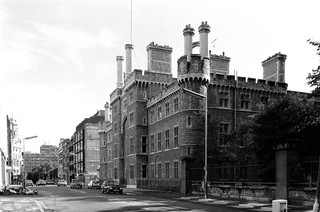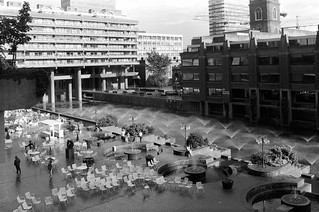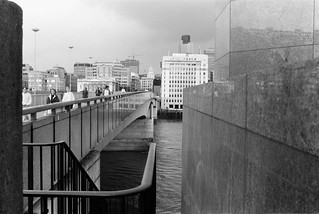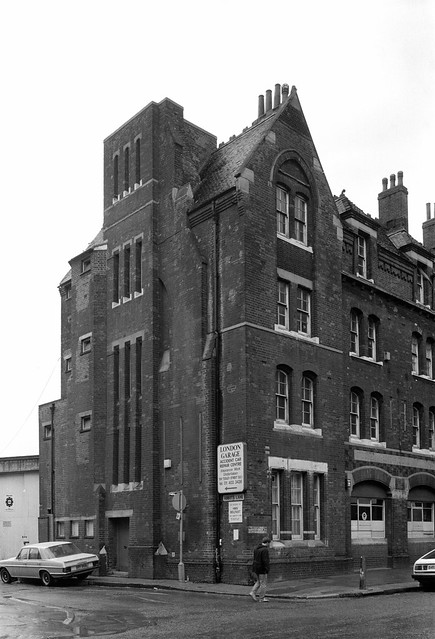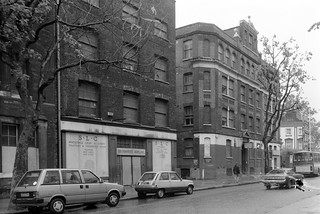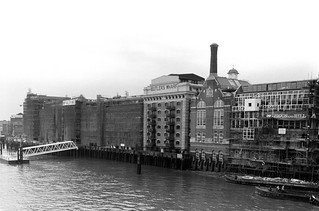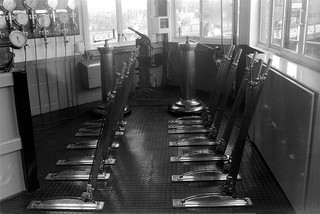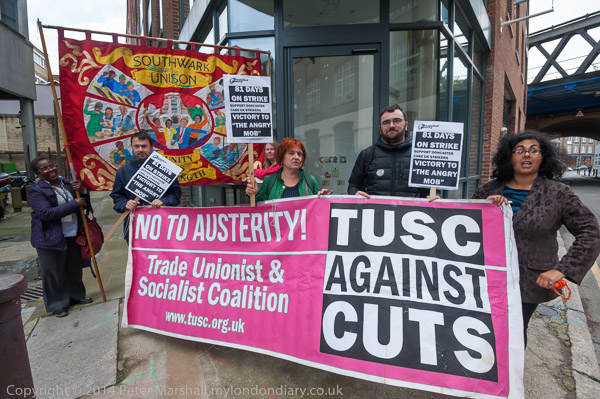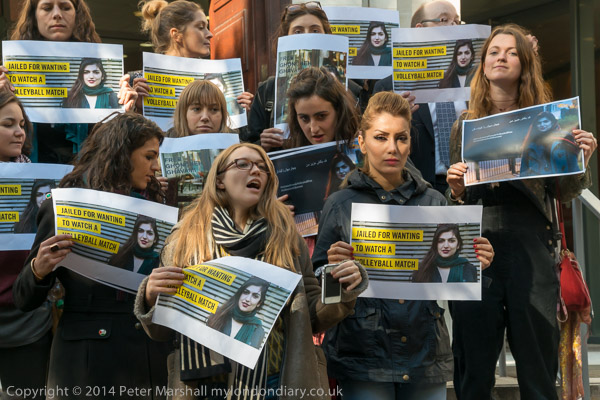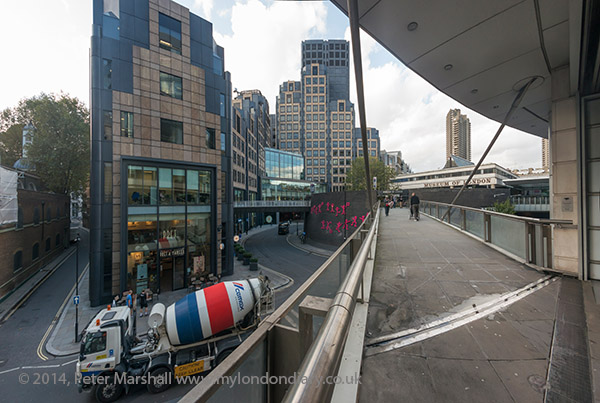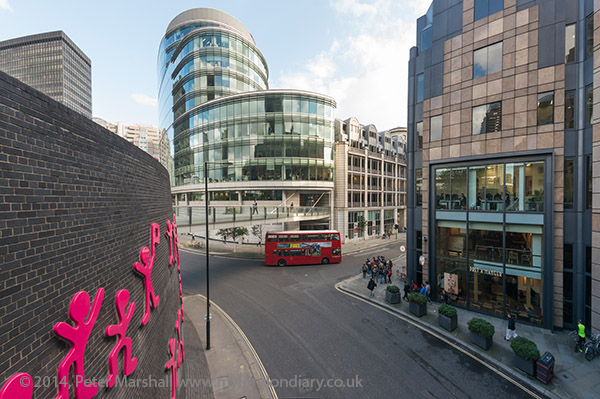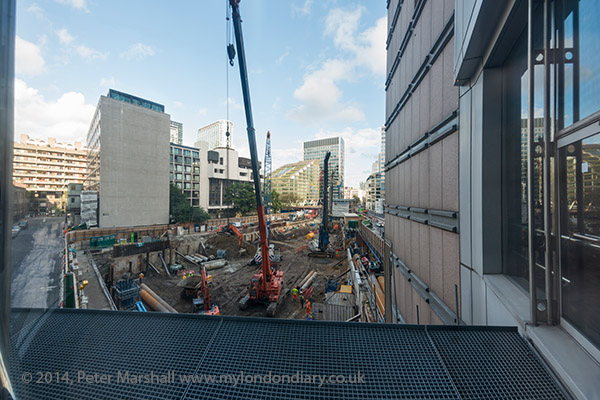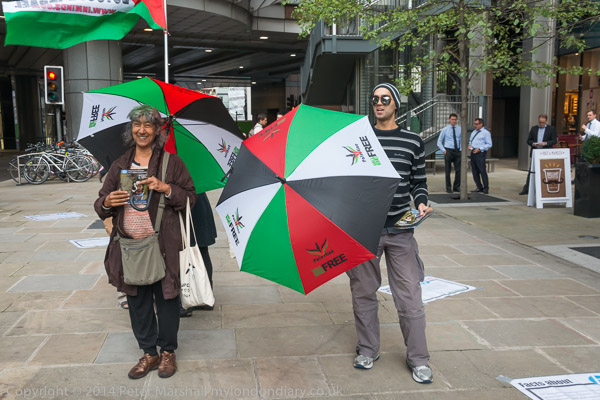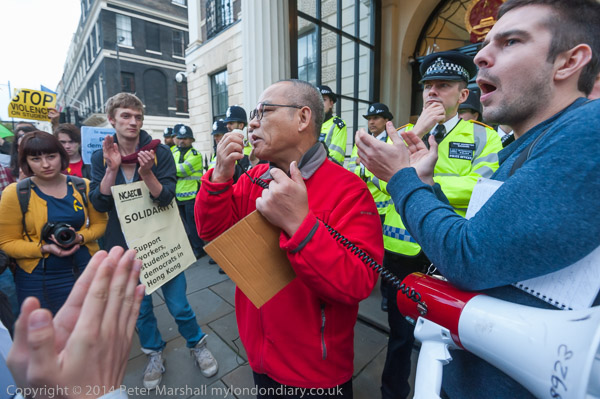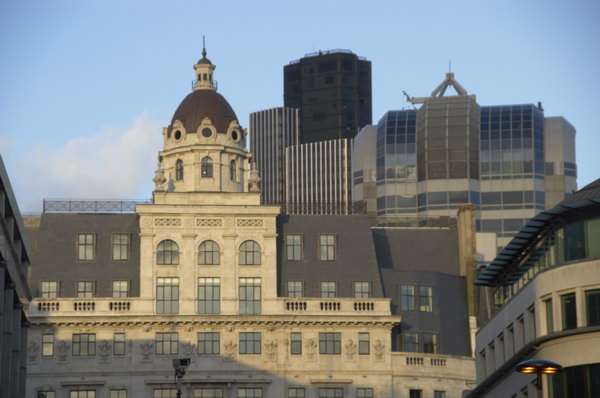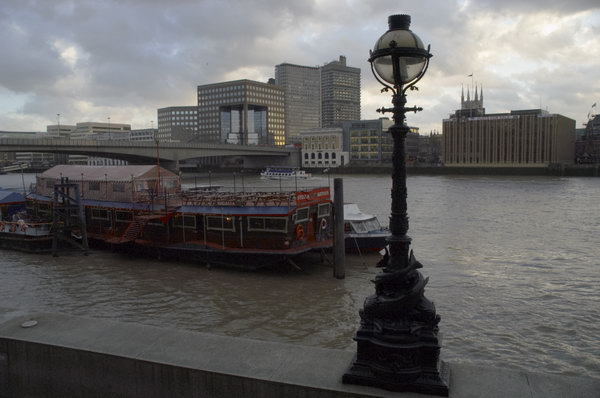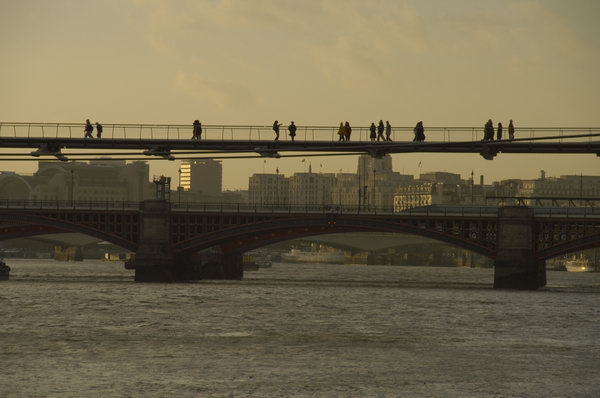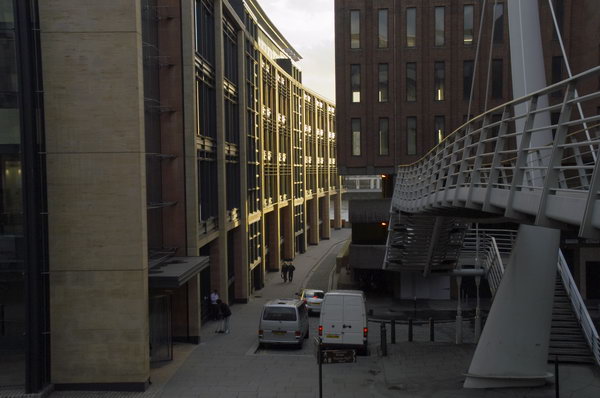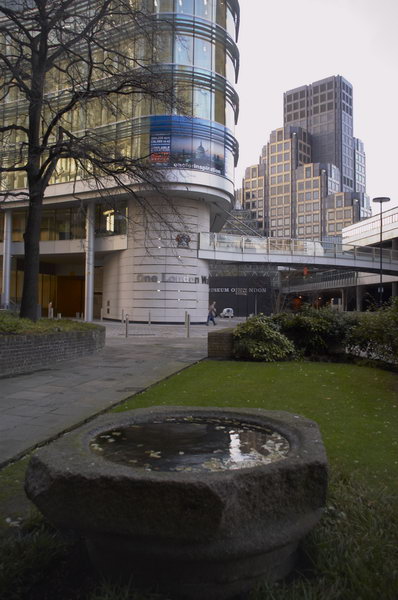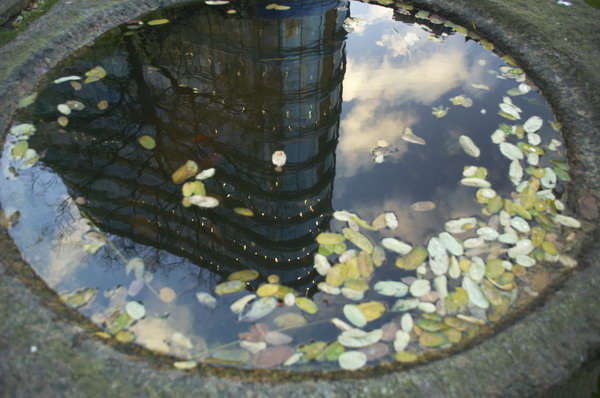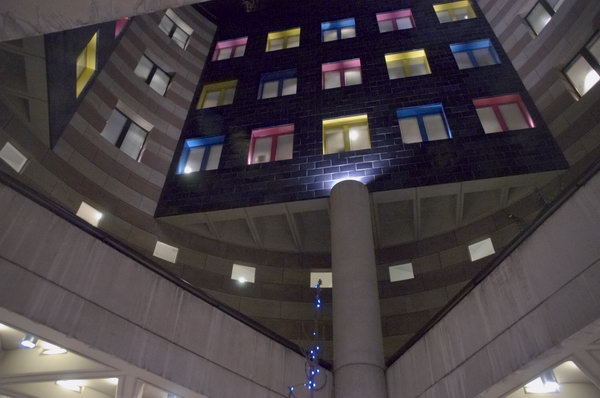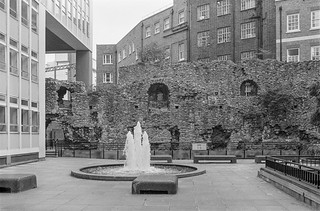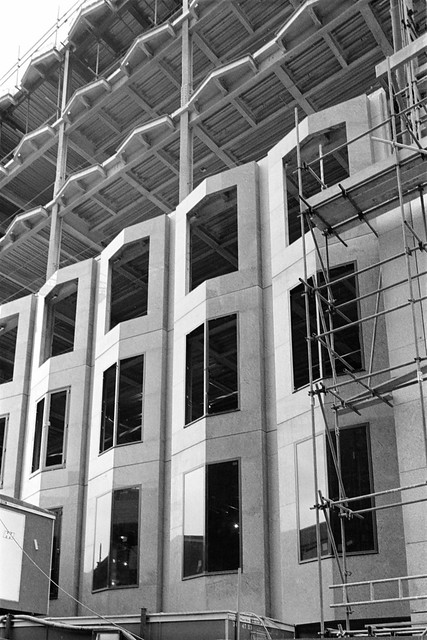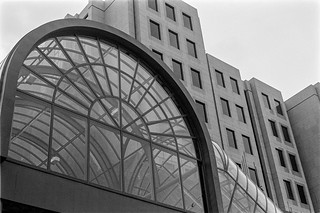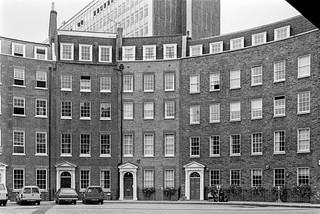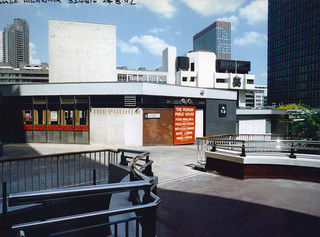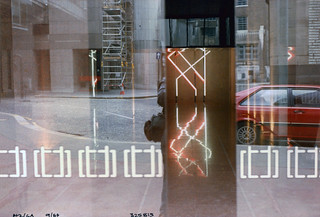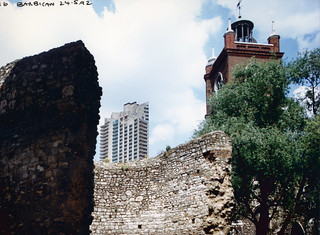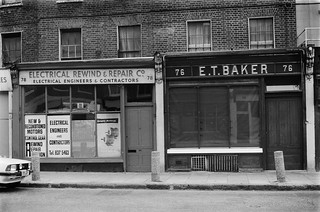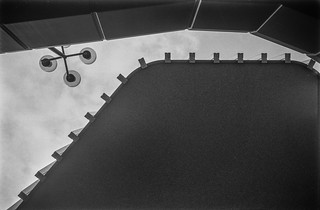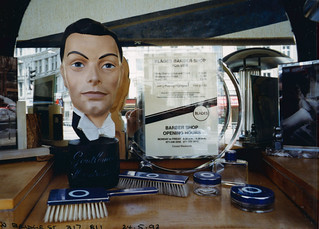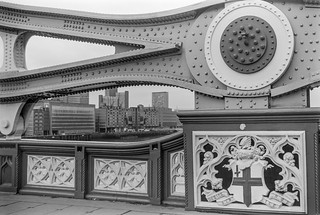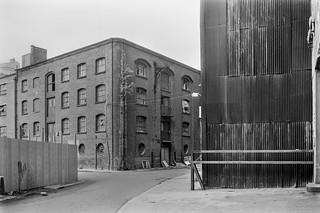My last walk in May 1988 ended around the City Road which I walked down to catch the ‘drain’ back to Waterloo. In 1988 Bank Station on the Waterloo and City line still was a part of British Rail, and was one of the ‘London Termini’ for which my ticket from the suburbs was valid. Until it was transferred to London Underground in 1994 it provided a cheap route for me into to centre of the City.
Wesley’s Chapel and Leysian Mission at 49 City Road calls itself the Mother Church of World Methodism. Wesley employed the surveyor of the City of London, George Dance the Younger as his architect and the builder was a member of his congregation; the church is Grade I listed despite considerable alterations in the Victorian era and later. When built it was Church of England Church, as Methodism only became a separate church after his death.
The best bit about the Grade II listed statue of Wesley, created in 1891 by Adams Acton is probably the plinth and the wording below the statue ‘THE WORLD IS MY PARISH’. I particularly liked the shadow of the lantern above the entrance on the door below.
This Grade II listed ‘castle’ on City Road was designed by Joseph A Jennings in 1857 as a barracks for the Royal London Militia. It later became the home for City of London Territorial Army and Volunteer Reserve, and since 1961 has been part of the Honourable Artillery Company estate.
When I was very young I had a very secondhand and battered toy fort for my toy soldiers, and either it was based on this building or this building had been based on it.
I think there had just been a shower of rain – and perhaps I had walked into the Barbican to shelter from it and perhaps view the exhibitions in its free spaces. Though I did go also to the major photographic shows that were held there, often taking students to see them. But this walk was in the Whitsun half-term.
But the terrace is clearly wet and there are no people sitting on the many chairs, although a few perch on the low brick walls. At right is the City of London School for Girls.
My rail ticket could also take me to London Bridge, and my first walk in June on Saturday 8th began there. I went to London Bridge but didn’t cross it, instead staying on the south bank, and taking this slightly curious picture in which the River Thames appears only as a thin rectangle underneath the white rectangle of Adelaide House. When completed in 1925 this now Grade II listed building was the City’s tallest office block, 43 metres – 141 ft – high.
Looking up into the office block at 1 London Bridge Street it’s hard to distinguish reflection from reality as I’m sure architects John S. Bonnington Partnership intended. Completed two years earlier in 1986 it was still a rather startling building.
The steps to the riverside walkway go through the corner of 1 London Bridge and over them are some buildings from the Victorian era on the opposite side of Borough High St and the pinnacles of Southwark Cathedral. I seem to have chosen another rainy day for a walk.
I walked east not on the riverside walk, but along Tooley St and photographed this building on the corner of Abbots Lane, a street that has now more or less disappeared and is simply a vehicle entrance to PricewaterhouseCoopers buildin in More London. This former Fire Brigade Headquarters built in 1879, architect George Vulliamy, was for many years the model for other fire stations and the headquarters of the Metropolitan Fire Brigade and its training centre for firefighters. It now houses the Brigade Bar and Kitchen, opened in September 2011 by Chef Founder Simon Boyle, a social enterprise which together with the Beyond Food Foundation gives apprenticeships to people who have been at risk of or have experienced homelessness.
It had been the great fire of Tooley Street in 1861 that led to the formation of the Metropolitan Fire Brigade in 1862, the greatest fire in London since 1666. Many of the riverside warehouses went up in flames over two days and the man in charge of the firefighters, Mr James Braidwood, was killed when a building collapsed. There have been many fires in Tooley St since, and in 1971 Wilson’s Wharf was the site of the ‘Second Great Fire of Tooley St’, with 50 pumps fighting the fire that started in an unoccupied refrigerated warehouse. The area destroyed is now the site of Southwark Crown Court.
These were fairly typical of the tall warehouse buildings that line much of Tooley Street. I’m unable to identify the exact locations of these buildings which don’t quite seem to match any of those left standing. The negative has been badly damaged at bottom right and since it only affects the roadway and a car I’ve not bothered to try to repair it.
The picture shows the large amount of building work that was taking place along this section of the bank by Higgs and Hill and McAlpine. It seems too that barges were being used to take away some of the rubble.
I have never understood why quite so many levers were needed to raise two sections of roadway to open the bridge for river traffic. There seem to be two handles to turn around at the end furtherst from my camera and a superfluity of dials at top left.
I think I crossed Tower Bridge and made my way to Tower Gateway for the DLR. The station had opened the previous August and my walk continued from Crossharbour on the Isle of Dogs – in another post. Before the opening of the Jubilee Line this was probably the quickest route there.

